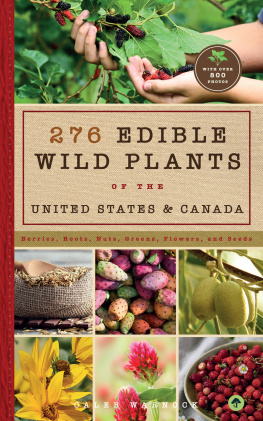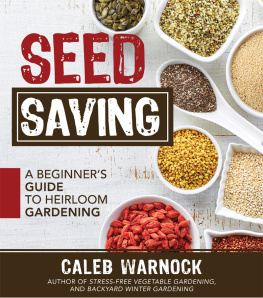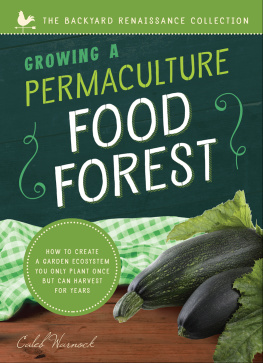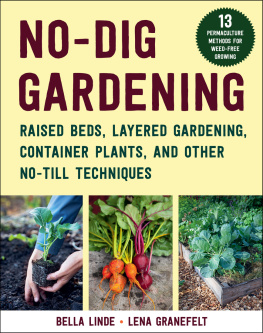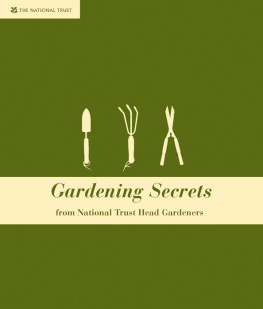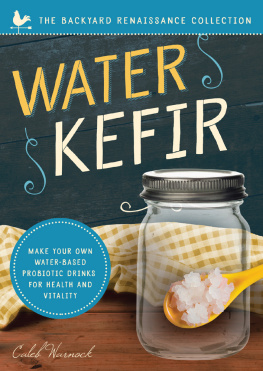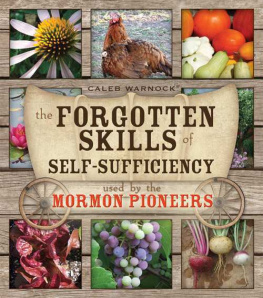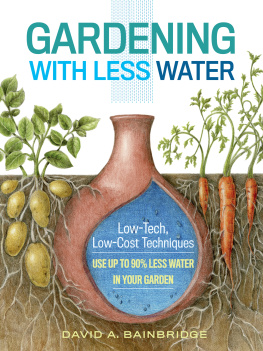

Copyright 2016 by Caleb Warnock and Logan J. Lyons
All rights reserved.
Published by Familius LLC, www.familius.com
Familius books are available at special discounts for bulk purchases for sales promotions or for family or corporate use. Special editions, including personalized covers, excerpts of existing books, or books with corporate logos, can be created in large quantities for special needs. For more information, contact Premium Sales at 559-876-2170 or email
Library of Congress Catalog-in-Publication Data
2016961879
ISBN 9781944822552
Edited by Maggie Wickes
Cover design by David Miles
Book design by David Miles and Maggie Wickes
10 9 8 7 6 5 4 3 2 1
First Edition
CONTENTS

Welcome to Successful Gardening in Utah!
W hat stops you from loving your garden?
Weeds, bugs, water bills, struggling plants, stunted harvests, expensive fixesthese are the things that stop many people from growing more of their own food.
Gardening in Utah is unlike gardening almost anywhere else. We face unique challenges, but there are simple solutions that can turn your garden from a weed-infested burden to a source of health, food, and joy. If your garden feels like a burden, you are not likely to keep it up. On top of which, you are not likely to teach your children the skills they will need to love growing their own food. My goal in writing this book is to make stress-free, weed-free gardens filled with delicious food possible for everyone who is interested in learning how.
The advice in most gardening bookswritten by authors who have never grown anything in the high desert climate of the Rocky Mountain Westis unusable here. Lets examine, one by one, the unique challenges that can derail any Utah garden if you dont know the tips and tricks needed for success here. This book will give you specific solutions for every unique growing challenge in our beautiful desert state.

Problem and Solutions
LACK OF SUMMER RAIN
Utahs prime gardening season (days with no frost) is June, July, and August. The problem is that Utah can get, on average, less than an inch of rain in each of these months. The typical vegetable garden must have between 1 and 1.5 inches of water per week.
What little rain does fall is made fairly useless because of two things:
First, the soil is baked so dry in these months that when rain does fall, it rarely penetrates the soil. Most summer rainstorms last ten minutes or less, and rain falls heavily, which can give people the false impression that its a good summer rain. But by digging down a couple of inches, it is clear that the rain has failed to penetrate. The top inch or two are damp, and the soil below that is bone dry (especially in areas not watered with a sprinkling system).
Second, the extreme heat causes whatever moisture is near the top of the soil to evaporate quickly. Without this consistent moisture, it is nearly impossible for seeds to germinate. Most seeds must be planted near the top of the soil, yet this is the part of the soil that is most difficult to keep wet. If a gardener can get the seeds moist, they will germinatebut if the soil is then allowed to dry out, the seedling can die even before it produces its first leaf.
THE SOLUTION: The settlers and pioneers who turned this state from an alkaline desert into a blooming garden watered once every seven to ten days, and their gardens thrived. For best success, we must design a garden that follows their watering schedule.
UTAH AVERAGE PRECIPITATION
JAN: 1.25 INCHES
FEB: 1.25 INCHES
MAR: 1.79 INCHES
APR: 1.99 INCHES
MAY: 1.95 INCHES
JUN: 0.98 INCHES
JUL: 0.61 INCHES
AUG: 0.69 INCHES
SEP: 1.21 INCHES
OCT: 1.52 INCHES
NOV: 1.45 INCHES
DEC: 1.41 INCHES
SOURCE: http://www.wrh.noaa.gov/slc/climate/slcclimate/
SLC/pdfs/Highest%20and%20Lowest%20Precip.pdf
EXTREME OVERWATERING (PANTING PEPOS)
Because Utahs climate is so dry, most gardeners dramatically overcompensate by watering their garden way more than is healthy. This can cause many problems: tomatoes, watermelons, and cantaloupes split; nutrients are washed out of the soil, causing leaves to turn yellow; and the over-watered soil becomes more alkaline. All of this stunts the growth of plants, which forces the gardener to use petrochemical fertilizers to keep the plants healthy. In effect, this is the equivalent of hydroponic gardening, which means you are growing plants in water instead of soil. When you add up the costs of water (which is increasingly expensive), seeds, and fertilizer, many gardeners find that the vegetables are cheaper at the store.
THE SOLUTION: Create a garden designed for low water use in the desert.
INSECT OASIS INFESTATION
The worst problem caused by overwatering is that a garden can become an oasis for pests. A common gardening question people have is:
I have X pest killing X plant in my garden. What do I do?
The solution comes in how often the garden is being watered. Many Utah gardeners are watering their gardens three times a week, and thats why they have pests. Any garden that is overwatered becomes an oasis in the desert for every pest imaginable. As long as overwatering continues, the pests will remain.
THE SOLUTION: Create a garden designed for low water use in the desert.
LACK OF SUMMER HUMIDITY
Because Utah air is so dry, plants and soil dry out much faster than they do in areas with humidity. The hanging baskets of flowers sold in every nursery and big box store in early summer are the best example of this problem. A vegetable or flower planted in the ground can lose water from only the top of the soil. A plant in a pot, however, evaporates moisture on the top, sides, and bottom. Because of this, potted plants struggle in the desert. The lack of humidity means the air is so dry that it literally sucks moisture from pots. Pots have to be watered almost daily just to keep them alive, or you have to use expensive chemical soil additives and watering systems. Basically that means more time spent babysitting a pot and trying to fight Mother Nature. Instead of fighting, gardeners who find success in Utah are those who design all aspects of their garden to work hand in hand with Mother Nature, not fight her.
THE SOLUTION: In Utah, you must garden down, not up. Many gardening books teach to plant seeds at the top of a furrow and plant potatoes and squash at the top of hills. In Utah, this is a big mistake, because your hill and furrow will simply drain water downward, making it harder and harder for your garden to access water. So, Utah gardeners should plant at the bottom of a furrowthe deeper, the better. Because of Utahs desert climate, when planting down, not up, you capture as much water as possible. In wet and humid climates, the goal is to drain water away from the roots because plants can suffer from too much water. In Utah, the struggle is getting enough water.
For pots and hanging gardens, it is best to use containers with no holes at the bottom. The goal is to keep water in the containers and not drain it away.
Next page

